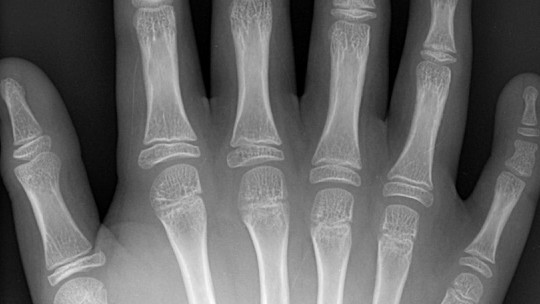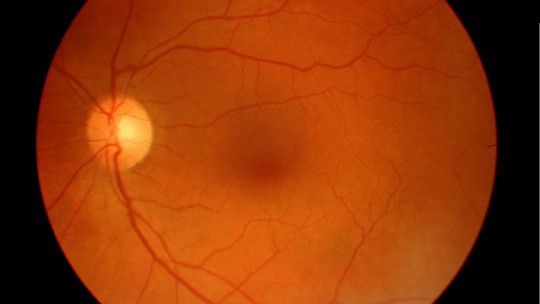
Visual problems are present in a large percentage of the world’s population, having been increasing in recent decades and presbyopia is the most common eye disease after the age of 40.
Vision diseases such as myopia, hyperopia and astigmatism constitute vision problems related to defects in visual refraction, which make it difficult for the person who suffers from them to clearly perceive perceived objects that are at a certain distance.
There are also other eye diseases that cause quite a few problems in the lives of those who suffer from them, such as cataracts and glaucoma, while there are diseases that do not cause as many difficulties in day-to-day life, such as color blindness.
Here you will find a summary of the most important eye diseases classified.
What are the main eye diseases?
Visual refraction consists of a process in which light, coming from outside objects, passes through the various parts of the eye a place where photoreceptor cells (cones and rods) are found, which are responsible for converting light from objects into nervous impulses that reach the brain through the optic nerve, to be transformed into images.
So, after this process, the images of the objects remain concentrated on the retina.
In cases in which these light rays are projected onto the retina at only one point, so that the image created is clear, we would be talking about a correct refraction process, which makes an emmetropic eye that does not present any pathology with regarding vision refraction.
On the other hand, if a problem occurs in this visual refraction process, so that the eye is not able to clearly focus the images on its retina, suffering blurred vision towards objects or people that are at a certain distance, we would talk about a refraction problem
Depending on the distance at which this difficulty occurs in perceiving objects and people clearly, we would talk about one pathology or another.
Below we will see the most common visual pathologies, classified.
Vision diseases related to visual refraction
The vision diseases that occur due to some difficulty in the visual refraction process will be explained below.
1. Myopia
The visual pathology known as myopia is characterized by entailing a blurred vision of objects that are at a far distance presenting the person who suffers from it with correct vision at short distances.
This is caused because a myopic eye is more elongated than a “normal” or emmetropic eye, so the light rays coming from perceived objects converge in front of the retina, instead of on it, so that the images they remain out of focus.
No matter how much a nearsighted person tries to focus clearly on a distant object, they will not achieve it. The only way they can correctly perceive the image of distant objects is by using divergent contact lenses or glasses, although they can also It can be treated through a surgical operation performed by a specialized ophthalmologist with the help of his team known as refractive surgery which also helps correct farsightedness and astigmatism.
Another important aspect to take into account in these visual pathologies is their degree of severity. This severity is measured in units known as diopters, therefore, the greater the severity of myopia a person has, the greater the number of diopters in which it will be measured.
However, the degree of severity based on the number of diopters, both of myopia, hyperopia and astigmatism, must be diagnosed by a medical professional after having performed the corresponding tests on the patient, this classification being applied as a guide, in based on the sources consulted.
The degree of myopia tends to increase as the person ages its detection as soon as possible being key so that the degree of severity worsens as little as possible.
2. Hyperopia
Other eye diseases related to visual refraction is hyperopia, which occurs when the light rays projected into the eye, which come from perceived outside objects, they cross posterior to the retina, whereas they should do so on the same
A person with farsightedness can clearly see objects that are far away; instead, Sees objects at close distance blurry This visual refractive error occurs because the length of the eyeball is shorter than that of a “common” or emmetropic eye.
However, hyperopia, unlike myopia, can compensate for its refractive error, in part, by increasing the dioptric power of the lens, the part of the eye located between the iris and the vitreous humor; whose function is to focus on objects perceived outside.
Therefore, a person with mild or moderate farsightedness can have correct vision thanks to the increased capacity of the lens, so that the light rays that pass through the eye, coming from objects perceived from the outside, are correctly focused on the retina. without blurring vision.

On the other hand, Although the lens can compensate for the visual refraction problems of people with farsightedness, it is advisable to use glasses so that the person does not strain their eyes too much because they may suffer other problems such as eye fatigue, headaches and even strabismus. In addition, if you suffer from hyperopia with a high degree of severity, the lens will not be able to compensate for the visual refraction error, so the person will see blurry vision at all distances.
hyperopia, If detected early, its severity does not tend to worsen over the years if detected at an early age.
On the other hand, with the use of corrective glasses, in addition to being able to see correctly, during the child’s stage of development, the length of the eyeballs tends to increase and, with this, the number of diopters will decrease, potentially becoming insignificant. upon reaching adulthood.
3. Astigmatism
A large percentage of people who suffer from farsightedness or nearsightedness usually also have some degree of astigmatism.
When a person suffers from astigmatism perceives an out-of-focus image of objects (e.g., perceiving the edges of objects with poor definition), occurring for both distant and near objects, that is, the person has difficulty seeing subtle details of objects, both at close and near distances. distant
Astigmatism is a visual pathology that occurs when The visual dioptric surfaces (the cornea and the lens) do not have the same curvature or convergence capacity in all their axes (e.g., the horizontal and vertical axis of the cornea are asymmetrical).
The degree of severity of astigmatism does not usually change very noticeably during the person’s growth stage, unlike what happens with myopia or hyperopia that is accompanied by it.
In addition to the visual pathologies mentioned above, there is another pathology related to visual refraction that is very common among the adult population, so it is convenient to comment on what it consists of below.
@image(id)
4. Presbyopia (straining eyesight)
Due to a common evolutionary aging process, The lens’s ability to focus on objects coming from outside on the retina decreases, caused by a weakening of its ciliary muscles so most people from a certain age lose the ability to focus correctly without the use of contact lenses.
It is common for presbyopia to begin at 40-45 years of age, although in some cases it may appear at an older age.
Other common eye diseases
Below we will briefly explain other eye diseases that, although they are less frequent than those related to visual refraction, also occur in many cases.
1. Color blindness or dyschromatopsia
This visual disease causes subjects who suffer from it to have agreat difficulty in being able to distinguish between certain colors because they have 2 types of cones when they should have 3.
There are 3 types of dyschromatopsias:
Deuteranopia and protanopia are eye diseases that occur more frequently in men than in women because they occur due to genetic causes that are linked to the X chromosome.
- Related article: “Color blindness: causes, symptoms, types and characteristics”
2. Open angle glaucoma
Of the group of eye diseases that cause damage to the optic nerve, glaucoma is the most common, whose damage is, specifically, in the open angle of the optic nerve.
The way glaucoma causes open angle damage is when The aqueous humor (liquid that nourishes and oxygenates the cornea and lens) cannot be drained effectively so that fluid accumulates and with it increases eye pressure, so that the optic nerve is damaged.
At the moment that the nerve fibers of the optic nerve begin to be damaged, they die and the person begins to develop blind spots in vision being known as “tunnel vision” common, which prevents the subject from having a peripheral vision of the environment, so that there are more blind spots in their vision than would be normal.
Therefore, the two most common symptoms of this visual disease are:
-
Tunnel vision.
-
Having blind spots in side or peripheral vision.
-
You may be interested: “Tunnel vision: what is it and what are its causes?”
3. Falls
This vision disease occurs when cloudiness is perceived in the lens, instead of being completely transparent, so that it does not allow the lens to focus the light well coming from the perceived objects to focus them correctly on the retina, which is why you have blurred vision. In addition, it is an eye disease that is increasing if it is not intervened in time.
The most common changes in vision that allow a person to detect that they might have cataracts are the following:
- See blurred.
- Double vision.
- Serious difficulties seeing at night.
- Have sensitivity to light.
- Perceiving lights as dimmer than normal.
- Perceive bright colors in a subdued way.
This disease can prevent the person from performing tasks such as reading or driving a vehicle, among others, and can also make it difficult to recognize other people’s facial expressions.
Fortunately, today, There are effective surgical methods that allow us to solve eye diseases like this
Cataracts are a disease whose probability of appearing in people increases proportionally with age.








